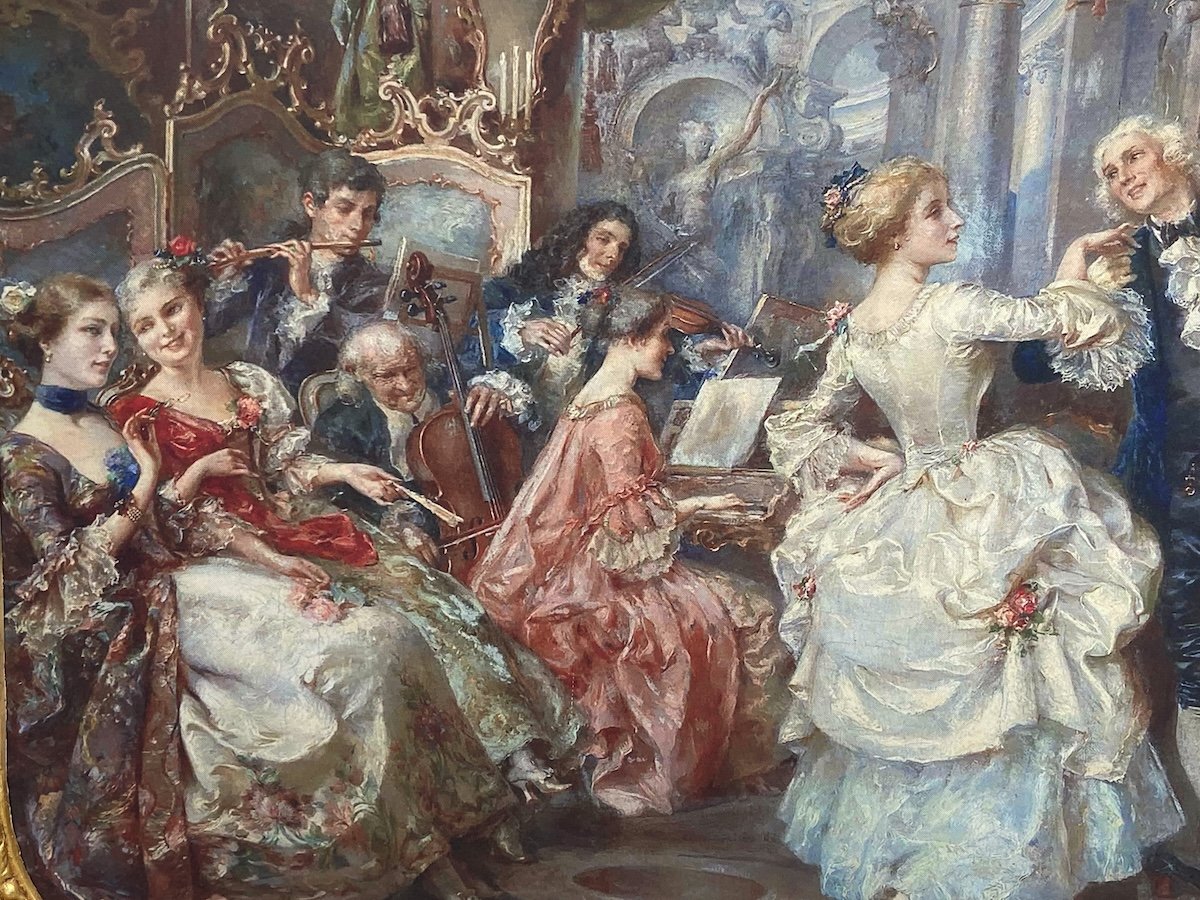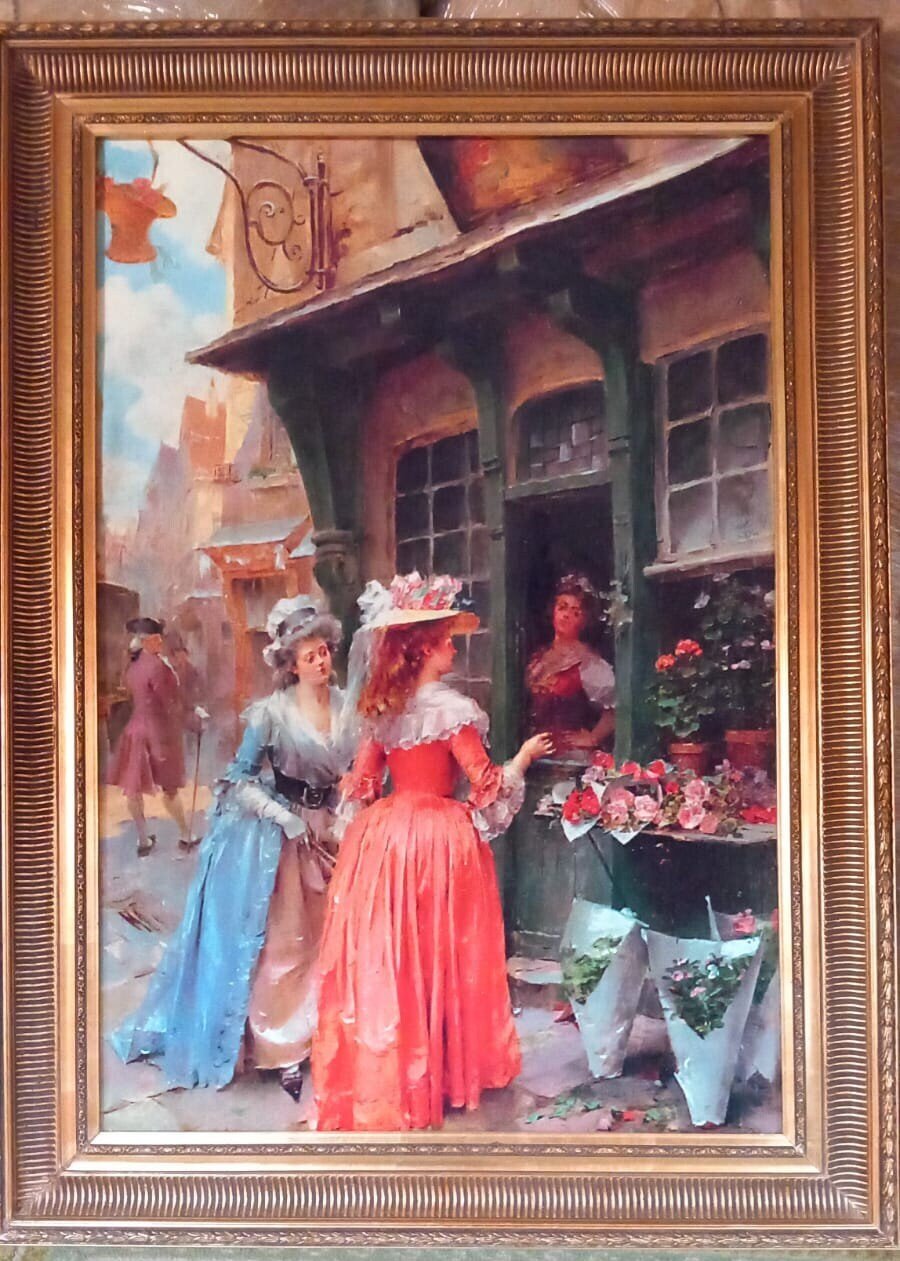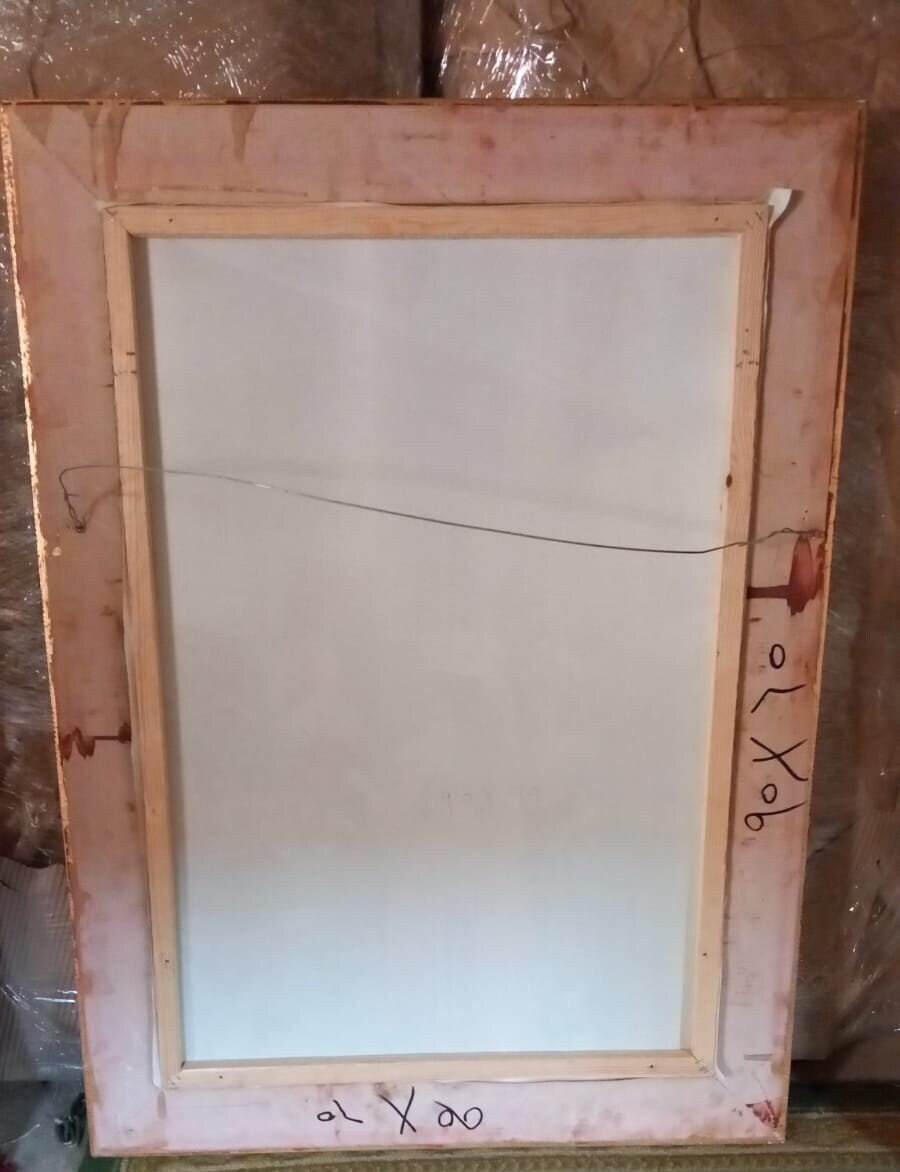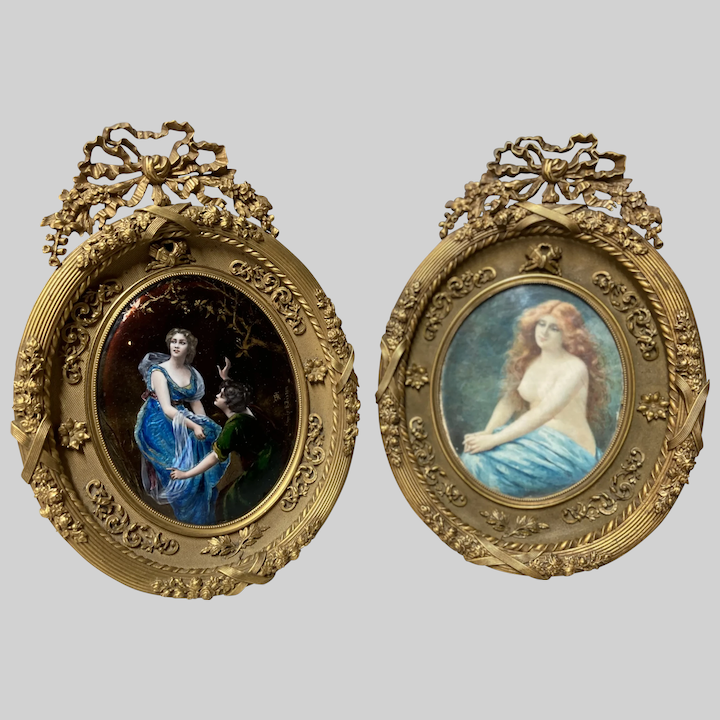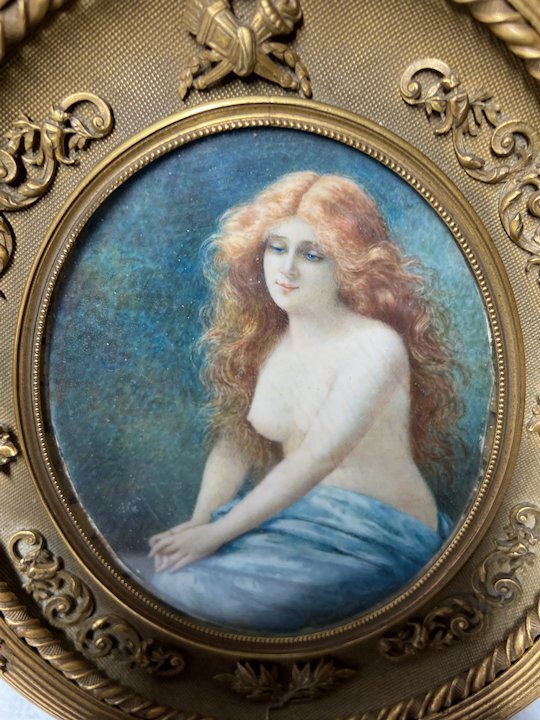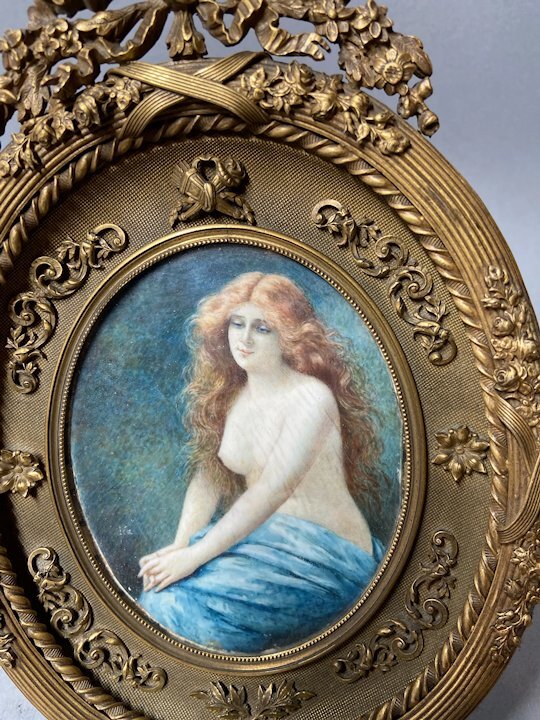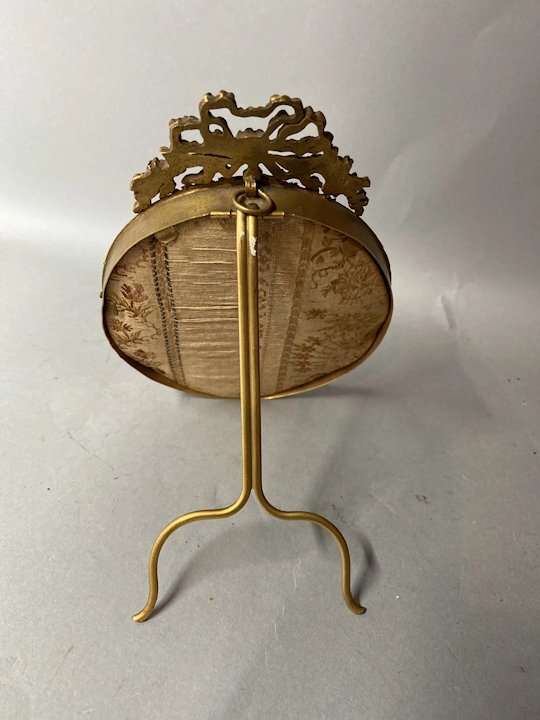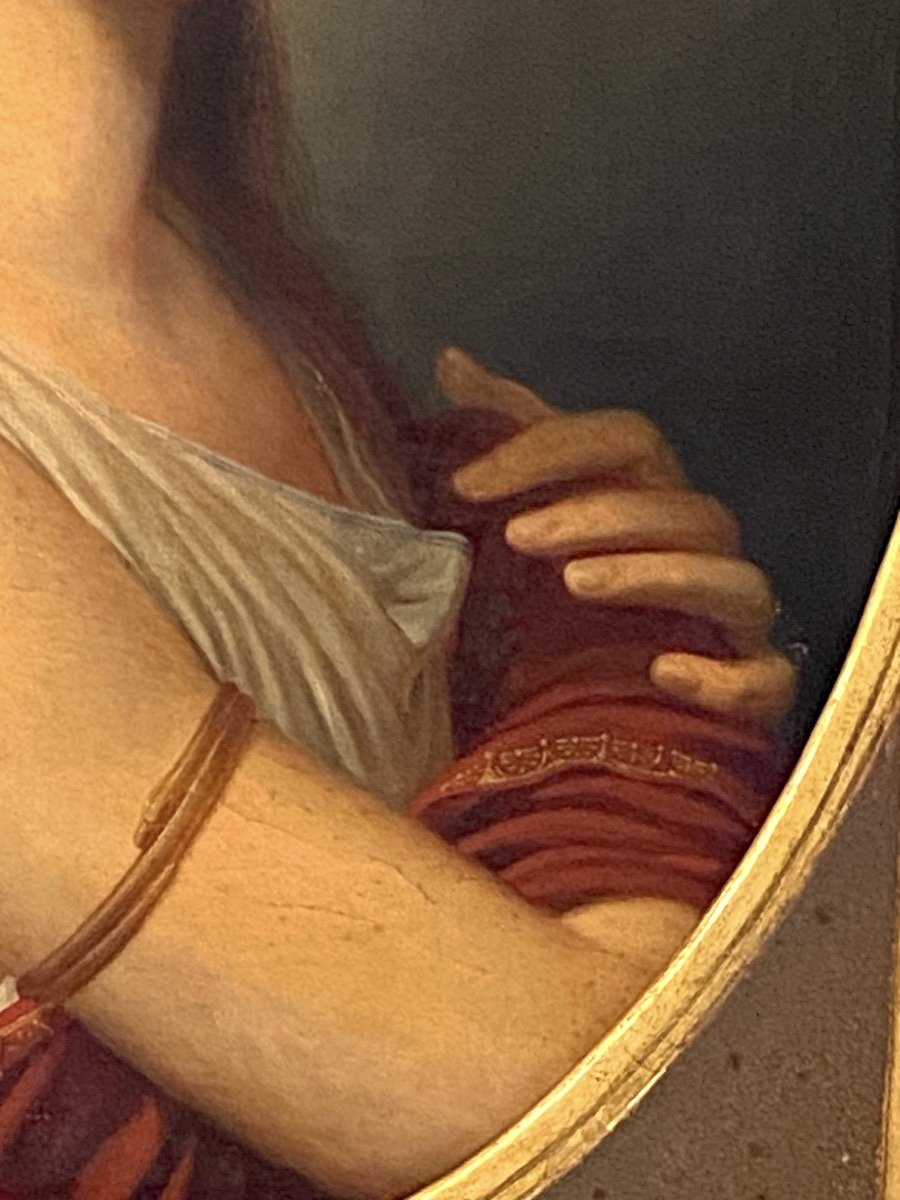 Image 1 of 16
Image 1 of 16

 Image 2 of 16
Image 2 of 16

 Image 3 of 16
Image 3 of 16

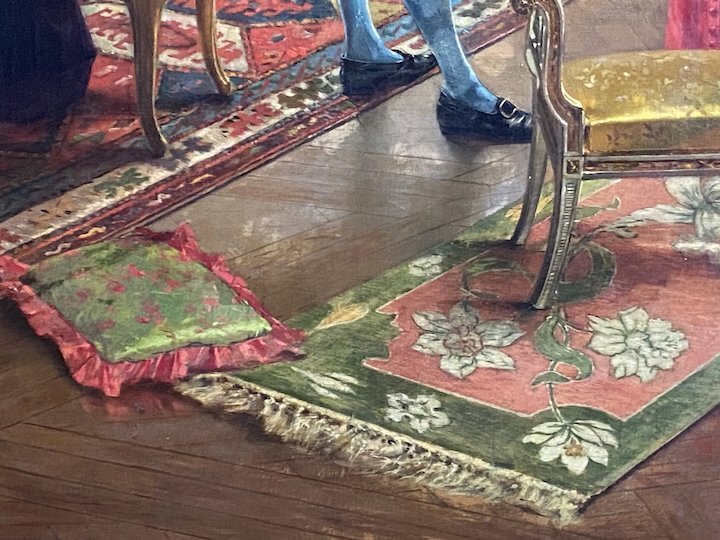 Image 4 of 16
Image 4 of 16

 Image 5 of 16
Image 5 of 16

 Image 6 of 16
Image 6 of 16

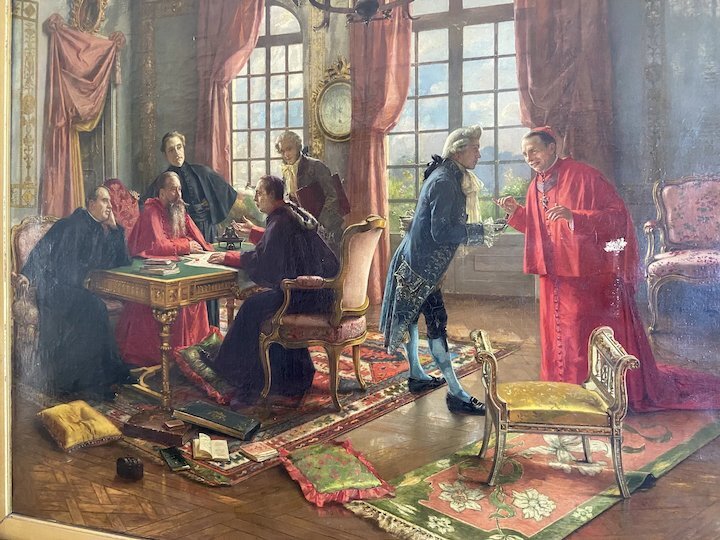 Image 7 of 16
Image 7 of 16

 Image 8 of 16
Image 8 of 16

 Image 9 of 16
Image 9 of 16

 Image 10 of 16
Image 10 of 16

 Image 11 of 16
Image 11 of 16

 Image 12 of 16
Image 12 of 16

 Image 13 of 16
Image 13 of 16

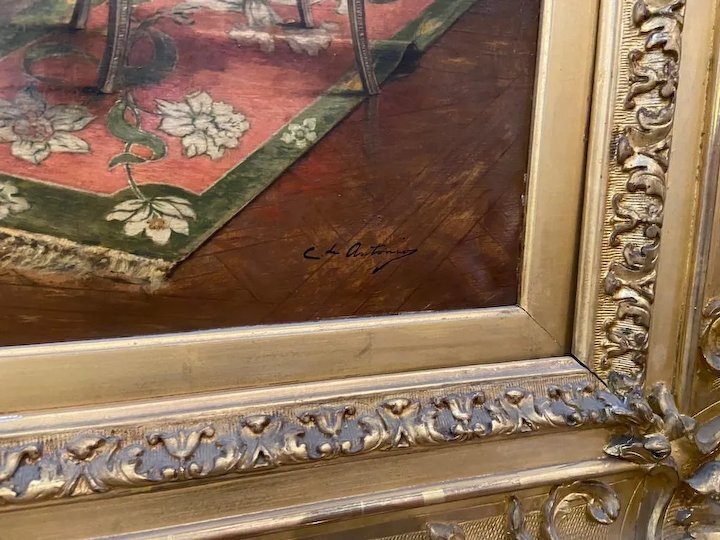 Image 14 of 16
Image 14 of 16

 Image 15 of 16
Image 15 of 16

 Image 16 of 16
Image 16 of 16

















Antique Italian Painting Late 19th Century
For inquiries about this item, please scroll to the bottom the page: “enquire about this item”.
This is a very special Italian painting from the late 19th century, painted by Cristóbal de Antonio.
Depicted is a room setting with 7 figures. The room is richly and luxuriously decorated, with rose curtains and Louis XVI style furniture and a clock. On the left half of the composition, three men are seated around a desk, one of them is explaining something and 4 other figures are sat/stood listening. On the right half of the painting, one person is talking to someone else. They are standing. Outside the window is what looks like a landscape. Some of the people are wearing traditional Catholic clothing, red or black robes. Some others are wearing clothing associated with them being part of the staff of the house.
Style-wise, this painting belongs to an interesting combination of neoclassicism, the romantics and natural painting. The composition is chaotic but well-confined and balanced out, there are two clearly distinguishable groups of people that are looked at by the beholder of the painting separately. The eye is naturally drawn to the left group first—the European/Western eye reads from the left to the right, and might well be pulled to the golden cushion on the floor on the left first—for it is a very vivid lively source of light and distraction from the more important scenery taking place. Then—slowly, the viewer of this painting looks at the pair on the right, seemingly discussing something trivial, and when observed closely, the staff member (in blue and wearing the wig), is rolling his eyes/looking away as he is informed of his next task. What especially makes this composition so special is the way in which 7 figures were painted in a decorated room and with many small attributes (cushions, books, carpets, furniture) and it still reads as a well-balanced calm painting. It is not too much for the eye, it is in fact a very realistic representation. This is then accompanied by the way in which the oil paint was put to use: no brush strokes are to be observed—nothing modernist or post-modernist. This painting was made with classical techniques, perhaps we should indeed call them neo-classical, for it to communicate as realist of an image as possible. It makes use of light and shade in a very effective way to create a realistic and lively image (take a look at the fold in the carpet on the right for example), and the painter is clearly someone who understands the workings of perspective and depth very well. The most straight-forward way in which to observe this would be to look at the beautiful rugs on the floor as well as the almost Da Vincian depths painted in the romantic nature-scene outside the tall windows, or the construction of the wooden elements in the floor of the room—anything but simple to paint. What else shows the skill of de Antonio is the composition frame in its totality: it was cut off precisely at the point where the viewer is left what is more to this room. When looking at the right part of the composition, the painter could have also decided to not paint on further to the right than the cardinal figure in the red. However, understanding the need for some more calm to balance the composition, and understanding the effect of showing inaction (emptiness lingers in the imagination of humans more than filling everything in with things) on the audience of the painting, de Antonio decided to paint ¾ of a chair on the right in the back of the room, leaving the viewer excited for what is more to this house.
Now content-wise, this painting represents a group of people adorned in Catholic dress. The red robes especially are likened to those worn by Cardinals in the Vatican (Rome, Italy), by the people who work closely with the pope. Red is classically known to be the colour of blood and martyrdom. The cardinals are said to wear red robes because they are considered the closest advisors to the pope and therefore should be ready to shed their blood for the church and Christ. The black robes are also classically worn by people high up in the ranks of the Catholic church, especially by the clericals (administrative staff of the catholic church). One figure in this composition is especially important to mention, it is the figure who was also prophetically placed in the middle of the composition—the person wearing the purple robe with the fur. It is the person who the other four figures surrounding him are listening to, clearly he has some sort of authority. The problem with reading the purple colour in this painting is this: its meaning is one of two things. On the one hand, purple is a colour typically worn in the church during Advent and Lent seasons, because it reflects sorrow and suffering. Sorrow as the faithful await the arrival of the Savior, and suffering to mark Jesus Christ’s 40 days in the desert (Lent). However, on the other hand, purple is also a colour that came to symbolize wealth, power and royalty, because in antiquity purple dye was very expensive. Nothing else in the painting allures to the fact that it is advent or lent, although it could be, but a lot in this painting refers to wealth and power. Thus, it can be taken to mean that the person in purple is the owner of the house, or at least the most important in the room. This fact, accompanied by the typically French Louis XVI furniture and decorations in what looks like a room in a large house owned by someone who is clearly well-off, makes for an interesting scenery.
The gold leaf frame of the painting, the gold surrounding it, is authentic and very richly decorated too.
The red robe of the cardinal on the right misses a small spot of paint, it has a small scratch.
The painting is overal in good condition , certainly for its age.
In conclusion, C. de Antonio has clearly made a very good attempt at combining two worlds here: the divine powers of the church and the worldly quality of the stunning European art in the form of furniture/decorations. This painting communicates wealth and sublime power, dressed in a very convincing vividly alive scenery—a balanced composition with bustling colours and very strong understanding of light and shade, clearly learned from great masters.
This is a very large painting that will be an eye-catcher in any room that it is put up in. Its measurements are: 100 cm high x 115cm wide. This is roughly equal to 40 inch high x 45 inch wide.
It is a truly European historical cultural artefact, effortlessly combining high culture of France with Italy and connecting the whole European continent. The combinations and allegories of divine and worldly power made in this scenery is oftentimes imagined as the high times of Western civilization, making this a truly unique piece of art.
For inquiries about this item, please scroll to the bottom the page: “enquire about this item”.
This is a very special Italian painting from the late 19th century, painted by Cristóbal de Antonio.
Depicted is a room setting with 7 figures. The room is richly and luxuriously decorated, with rose curtains and Louis XVI style furniture and a clock. On the left half of the composition, three men are seated around a desk, one of them is explaining something and 4 other figures are sat/stood listening. On the right half of the painting, one person is talking to someone else. They are standing. Outside the window is what looks like a landscape. Some of the people are wearing traditional Catholic clothing, red or black robes. Some others are wearing clothing associated with them being part of the staff of the house.
Style-wise, this painting belongs to an interesting combination of neoclassicism, the romantics and natural painting. The composition is chaotic but well-confined and balanced out, there are two clearly distinguishable groups of people that are looked at by the beholder of the painting separately. The eye is naturally drawn to the left group first—the European/Western eye reads from the left to the right, and might well be pulled to the golden cushion on the floor on the left first—for it is a very vivid lively source of light and distraction from the more important scenery taking place. Then—slowly, the viewer of this painting looks at the pair on the right, seemingly discussing something trivial, and when observed closely, the staff member (in blue and wearing the wig), is rolling his eyes/looking away as he is informed of his next task. What especially makes this composition so special is the way in which 7 figures were painted in a decorated room and with many small attributes (cushions, books, carpets, furniture) and it still reads as a well-balanced calm painting. It is not too much for the eye, it is in fact a very realistic representation. This is then accompanied by the way in which the oil paint was put to use: no brush strokes are to be observed—nothing modernist or post-modernist. This painting was made with classical techniques, perhaps we should indeed call them neo-classical, for it to communicate as realist of an image as possible. It makes use of light and shade in a very effective way to create a realistic and lively image (take a look at the fold in the carpet on the right for example), and the painter is clearly someone who understands the workings of perspective and depth very well. The most straight-forward way in which to observe this would be to look at the beautiful rugs on the floor as well as the almost Da Vincian depths painted in the romantic nature-scene outside the tall windows, or the construction of the wooden elements in the floor of the room—anything but simple to paint. What else shows the skill of de Antonio is the composition frame in its totality: it was cut off precisely at the point where the viewer is left what is more to this room. When looking at the right part of the composition, the painter could have also decided to not paint on further to the right than the cardinal figure in the red. However, understanding the need for some more calm to balance the composition, and understanding the effect of showing inaction (emptiness lingers in the imagination of humans more than filling everything in with things) on the audience of the painting, de Antonio decided to paint ¾ of a chair on the right in the back of the room, leaving the viewer excited for what is more to this house.
Now content-wise, this painting represents a group of people adorned in Catholic dress. The red robes especially are likened to those worn by Cardinals in the Vatican (Rome, Italy), by the people who work closely with the pope. Red is classically known to be the colour of blood and martyrdom. The cardinals are said to wear red robes because they are considered the closest advisors to the pope and therefore should be ready to shed their blood for the church and Christ. The black robes are also classically worn by people high up in the ranks of the Catholic church, especially by the clericals (administrative staff of the catholic church). One figure in this composition is especially important to mention, it is the figure who was also prophetically placed in the middle of the composition—the person wearing the purple robe with the fur. It is the person who the other four figures surrounding him are listening to, clearly he has some sort of authority. The problem with reading the purple colour in this painting is this: its meaning is one of two things. On the one hand, purple is a colour typically worn in the church during Advent and Lent seasons, because it reflects sorrow and suffering. Sorrow as the faithful await the arrival of the Savior, and suffering to mark Jesus Christ’s 40 days in the desert (Lent). However, on the other hand, purple is also a colour that came to symbolize wealth, power and royalty, because in antiquity purple dye was very expensive. Nothing else in the painting allures to the fact that it is advent or lent, although it could be, but a lot in this painting refers to wealth and power. Thus, it can be taken to mean that the person in purple is the owner of the house, or at least the most important in the room. This fact, accompanied by the typically French Louis XVI furniture and decorations in what looks like a room in a large house owned by someone who is clearly well-off, makes for an interesting scenery.
The gold leaf frame of the painting, the gold surrounding it, is authentic and very richly decorated too.
The red robe of the cardinal on the right misses a small spot of paint, it has a small scratch.
The painting is overal in good condition , certainly for its age.
In conclusion, C. de Antonio has clearly made a very good attempt at combining two worlds here: the divine powers of the church and the worldly quality of the stunning European art in the form of furniture/decorations. This painting communicates wealth and sublime power, dressed in a very convincing vividly alive scenery—a balanced composition with bustling colours and very strong understanding of light and shade, clearly learned from great masters.
This is a very large painting that will be an eye-catcher in any room that it is put up in. Its measurements are: 100 cm high x 115cm wide. This is roughly equal to 40 inch high x 45 inch wide.
It is a truly European historical cultural artefact, effortlessly combining high culture of France with Italy and connecting the whole European continent. The combinations and allegories of divine and worldly power made in this scenery is oftentimes imagined as the high times of Western civilization, making this a truly unique piece of art.




















